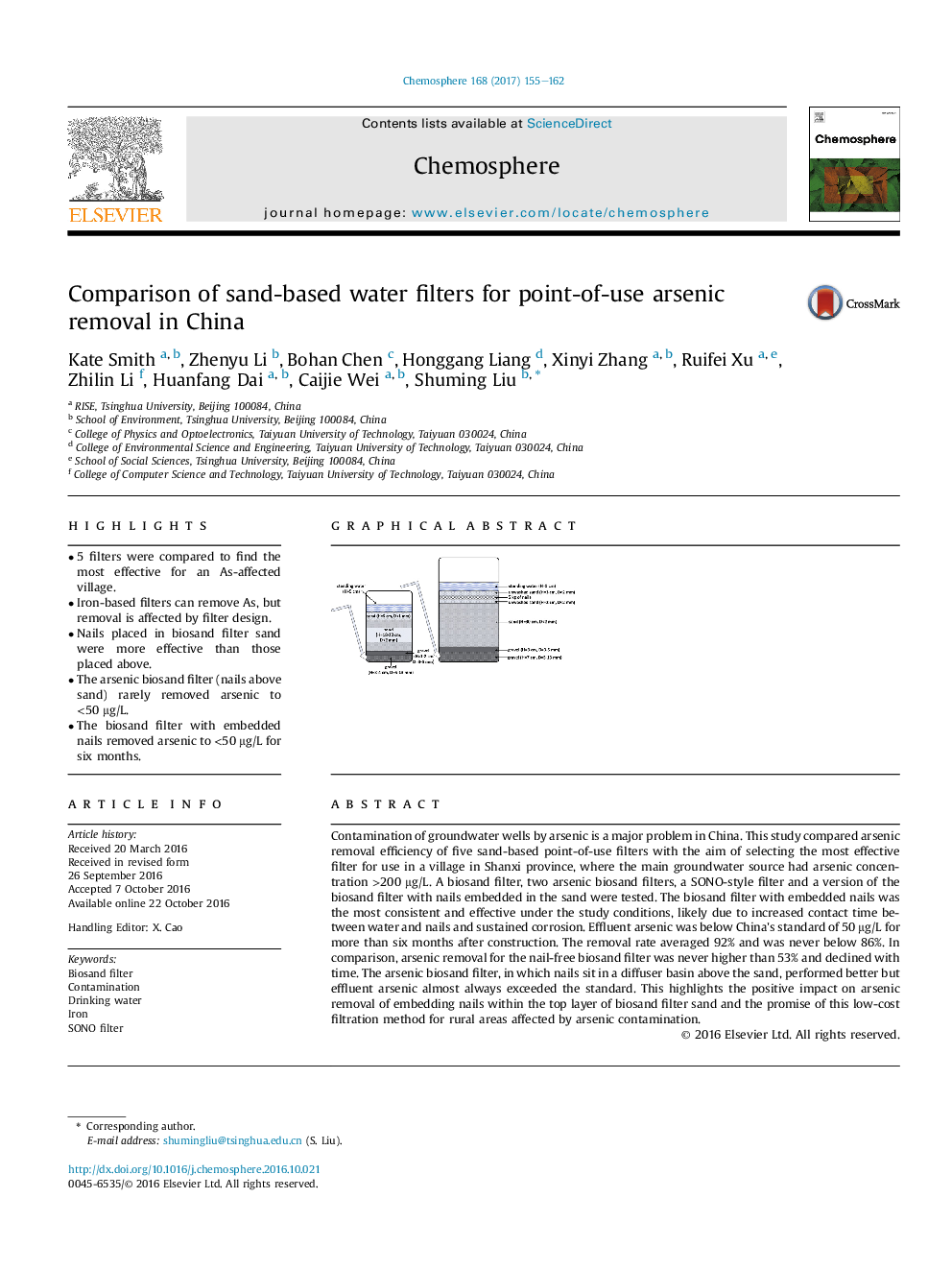| کد مقاله | کد نشریه | سال انتشار | مقاله انگلیسی | نسخه تمام متن |
|---|---|---|---|---|
| 5746587 | 1618803 | 2017 | 8 صفحه PDF | دانلود رایگان |
- 5 filters were compared to find the most effective for an As-affected village.
- Iron-based filters can remove As, but removal is affected by filter design.
- Nails placed in biosand filter sand were more effective than those placed above.
- The arsenic biosand filter (nails above sand) rarely removed arsenic to <50 μg/L.
- The biosand filter with embedded nails removed arsenic to <50 μg/L for six months.
Contamination of groundwater wells by arsenic is a major problem in China. This study compared arsenic removal efficiency of five sand-based point-of-use filters with the aim of selecting the most effective filter for use in a village in Shanxi province, where the main groundwater source had arsenic concentration >200 μg/L. A biosand filter, two arsenic biosand filters, a SONO-style filter and a version of the biosand filter with nails embedded in the sand were tested. The biosand filter with embedded nails was the most consistent and effective under the study conditions, likely due to increased contact time between water and nails and sustained corrosion. Effluent arsenic was below China's standard of 50 μg/L for more than six months after construction. The removal rate averaged 92% and was never below 86%. In comparison, arsenic removal for the nail-free biosand filter was never higher than 53% and declined with time. The arsenic biosand filter, in which nails sit in a diffuser basin above the sand, performed better but effluent arsenic almost always exceeded the standard. This highlights the positive impact on arsenic removal of embedding nails within the top layer of biosand filter sand and the promise of this low-cost filtration method for rural areas affected by arsenic contamination.
315
Journal: Chemosphere - Volume 168, February 2017, Pages 155-162
